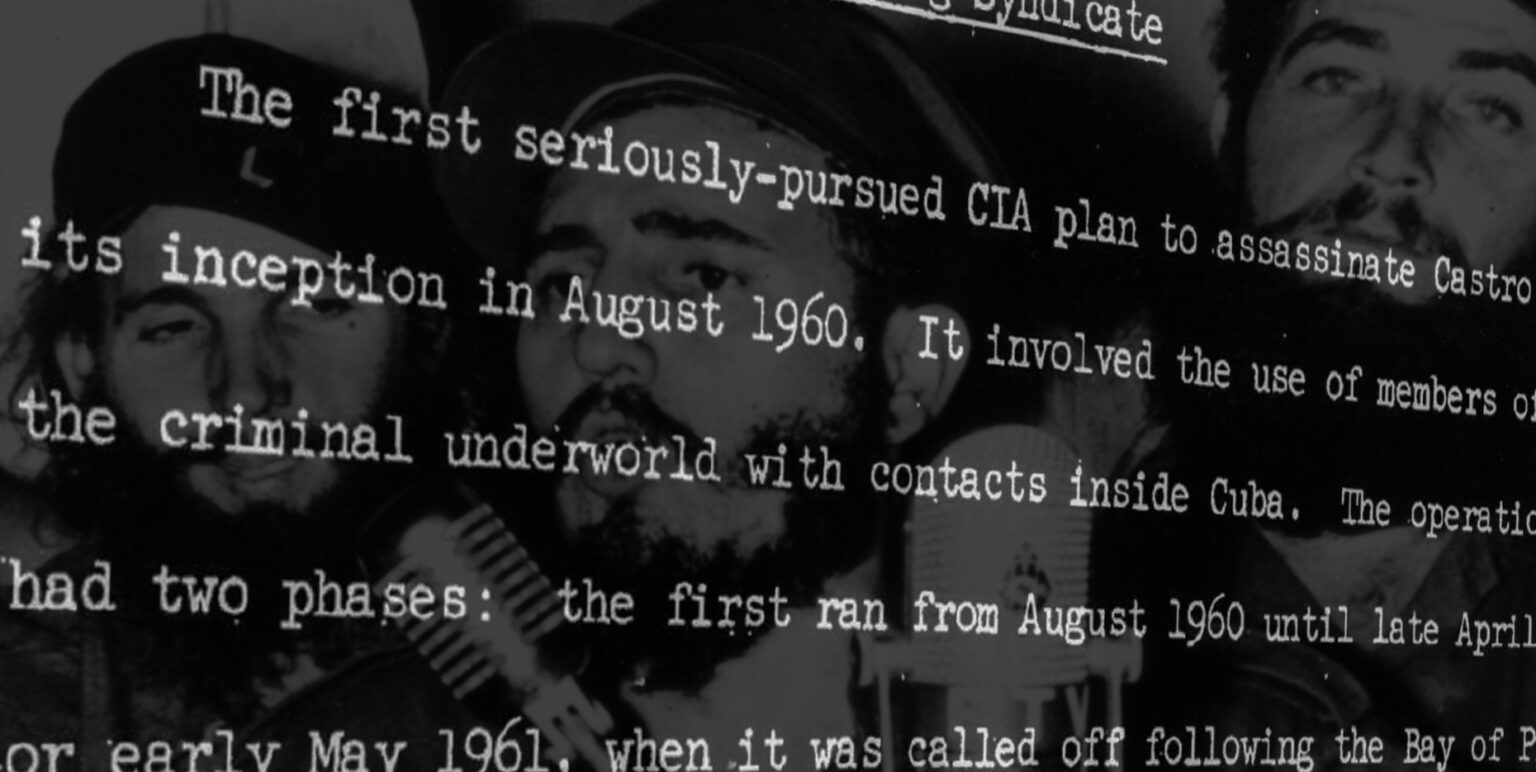
The Inspector Generalʼs report provides background on Rolando Cubela (Inspector Generalʼs Report, pages 93–95) The ReportĪn assassination weapon, a ballpoint pen rigged with a hypodermic needleįor Black Leaf 40 poison, to Rolando Cubela, AMLASH–1, at the very hour The AMLASH plots.” (“Alleged Assassination Plots,” page 180)Īpril 24, 1967, provides considerable information about Project AMLASHĭuring the Johnson administration. Or anyone above the Agency was informed of or specifically authorized Johnson administration (or earlier) and there

The Select Committee concluded: “the records of the Special Group do notĪssassination or of the AMLASH plot during the Rolando Cubela only as “a representative of an internal militaryĭissident group, which is plotting to overthrow Castro.” The minutes indicate theĬommittee members asked, “What sort of man is Cubela?” See Document 295 and footnotes 3 and 4 thereto. In the minutes of the Special Group/303 Committee meeting on January 7, ( Johnson Library, National Security File,Ĭountry File, Cuba, Exile Activities, Vol.

The investigation and agreeing with the FBI analysis. Plans, McCone sent Bundy an August 19 memorandum reviewing ItĬall the matter to the Attorney Generalʼs attention as a matter of lawĮnforcement.” (Ibid., Minutes of the June 18, 1964, meeting) FollowingĪn FBI investigation that dismissed the reported exile assassination Promptly the veracity of the reports and then undertake prevention. Bundy, felt that the United States wasīeing put on notice and should do everything in its power to ascertain McCone was somewhat skeptical of the reported plots and Group/303 Committee Records) The June 18, 1964, Minutes of a 303Ĭommittee meeting read: “Mr. Meetings, June 18, 1964, and JDepartment of State, INR/IL Historical Files, 5412 Special

McCone and McGeorge Bundy were to inform AttorneyĮnforcement agencies to prevent such plans. Regard to rumors of Cuban émigré assassination plots against Castro and selected Cuban leaders, Group/303 Committee Records of June–August 1964 indicate only that, in Johnson administration, even though the CIA had a relationship with Cubela. Involvement by the United States in any plot to assassinate Castro during the The records of the Special Group for the JohnsonĪdministration do not record any consideration, authorization, or The President, which was the usual practice.” (Ibid., page 180) Whoever was chairing the Special Group would have in turn reported to Have continued to consider these matters, and I would have assumed that Informed of or had authorized continuing efforts to assassinateĬastro, Helms replied: “The Special Group would So.’” (“Alleged Assassination Plots,” page 179) When asked whether Just canʼt answer that, I just donʼt know. “that efforts to assassinate Fidel Castro had continued into Johnsonʼs According to his testimony before the SelectĬommittee, when asked by the Committee if he had told the President After receiving the report, Helms orally briefed the PresidentĪbout its contents. Major Rolando Cubela of the Cuban military in plans to assassinate Fidel Report of April 24, 1967, which clearly indicated that the CIA was in contact with and cooperated with November 20, 1975, page 179) The result was the Inspector Generalʼs Operations with respect to Intelligence Activities, Report No.ĩ4–465, “Alleged Assassination Plots Involving Foreign Leaders,” ( Interim Report of the Senate Select Committee to Study Governmental States attempted to assassinate Castro, President Johnson directed Helms to conduct an investigation. Reading a March 7, 1967, column by Drew Pearson that alleged the United National Archives and Records Administration, RG 233, JFK AssassinationĬollection, Microfilm File 104–10184–10001, CIA Files, Job 80–T01357A, Box JFK64, Folder R48–ZZ. Helms on plots to assassinate Fidel Castro. Earman indicated that beginning AprilĢ4 he transmitted in installments a 133-page report to Director of

In a May 23, 1967, memorandum for the record Inspector General of theĬentral Intelligence Agency J.


 0 kommentar(er)
0 kommentar(er)
